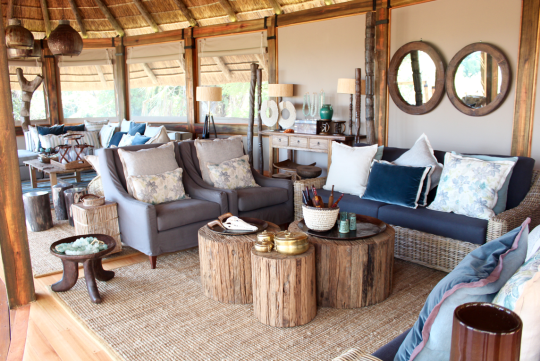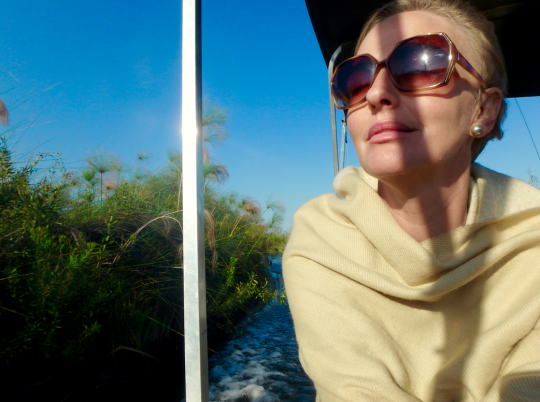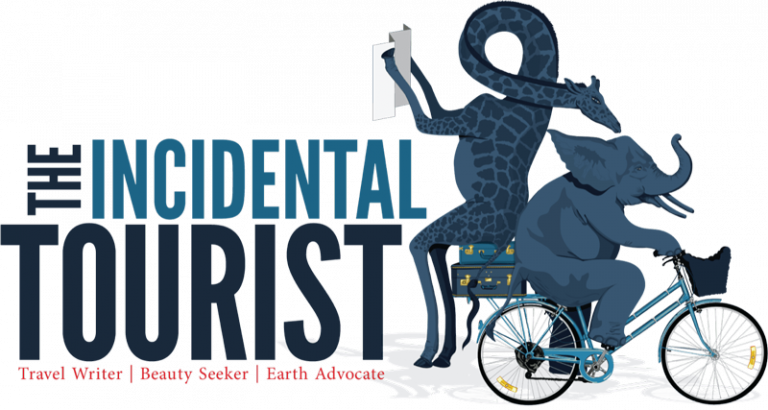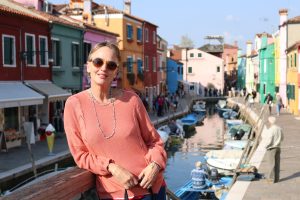
The how, where, when and what of the Okavango Delta.
From the light aircraft I catch glimpses of water canals pushing their way through the land, announcing the approach of the new season that will return grassy plains to water locked islands dense with game. In the distance, as we come in for landing, I see a lone bull elephant, relaxed and confident, oblivious to our presence. Instantly I get a sense of what the Okavango Delta represents.
The Okavango Delta.
Known as ‘the jewel of the Kalahari’, the Okavango Delta is a unique oasis and is regarded as one of Africa’s best safari destinations, with its abundant and diverse fauna and flora. One of the largest and most important inland wetlands of the world, here there a recorded 2500 species of plants, 65 of fish, 20 herbivores and their predators and more than 450 species of birds. This is a place where the river that never finds the sea, one where the magic is concentrated and kept.
Proclaimed the 1000th UNESCO World Heritage Site in 2014, during the floods from March to September the area swells to three times its normal size, creating a myriad of pristine wide open floodplains, narrow channels and deep lagoons which in turn form a multitude of small island networks. The vegetation is rich and the waterways are lined with reeds and papyrus.
The source of the flood lies in the extremely wet highlands of Angola to the north of Botswana. From here the Cubango River flows south, through Namibia, away from the sea, gathering even more water until it finally reaches Botswana, where the river becomes known as the Okavango. Its a natural phenomenal worth witnessing as the river meets a series of fault lines deep below the desert surface. Once the river passes over the first fault, it splits into several channels forming a vast, fan-shaped wilderness.
My visit with #FlyAirlink would have me divide my time between Desert & Delta’s Camp Xakanaxa and Camp Okavango, allowing the opportunity to get a feel of this true African wonderland from a 4×4 vehicle, motorboat, Mokoro and on a bush walk.

Camp Xakanaxa, Moremi Game Reserve.
Camp Xakanaxa – pronounced Ka-ka-na-ka – is found on the banks of the Khwai River on the Xakanaxa Lagoon in the Moremi Game Reserve and offers guests an authentic, year-round land and water safari experience.
Comprising of twelve classic Meru-style luxury safari tents with en suite showers, hand basins and toilet facilities, each tent has a private viewing deck with comfortable loungers that overlook the lagoon. There’s something extra special about sleeping under canvas, it certainly does add to the romance of the experience.
The camp itself is very relaxed and personalised with lovely management in place overseeing the charming team. There’s a lounge and dining rooms under thatch, a small library, large sundeck, plunge pool and sala with day bed. My favourite feature was the fire-deck which extends over the Khwai River and creates an enchanting environment in which to relax after dinner. There is also a larger pool with sun deck in the well kept grounds.
After dark you are escorted to your room as the area is not fenced in, and my neighbours were lucky enough to see a python slithering across the pathway, while we had monkeys and baboons for company and hippos around the tent at night.

The lodge deck. What a place for sundowners, lounging about, watching the passing game and contemplating the things that really matter in life. (pic supplied)



The fire-deck which extends over the Khwai River.

The views from the deck over the flood waters …


The pool and loungers, overlooking the bush.


The tent, with views and open air bathroom. (pics supplied)
Activities from the camp include year round land and water game-viewing experience in open 4×4 safari vehicles or powerboats. The diverse habitat ensures prolific sightings of Elephant, Buffalo, Hyena, Giraffe, Hippo, Wildebeest, Kudu, Lechwe, Lion and Leopard, among many others. Birding is spectacular and the guides incredibly passionate and knowledgable. A delight from start to finish.






This guy perched on a tall branch, perusing the land from his vantage point.

We had an incredible sighting of about 14 wild dogs on a hunt.
My highlights of Camp Xakanaxa in the Moremi Game Reserve include the herds of elephants, the abundance of game, the game drives, the stops for morning coffee and sundowners, a look at the greater national park, the rustic lodge living, the view across the water, the closeness to nature, our guide. The hippos playing right outside my tent, that I was happy to have keep me awake at night. One of the sounds so synonymous with a safari.
Desert & Delta’s Camp Okavango.

Camp Okavango, or Camp O as it is affectionately known, has just seen a rebirth and re-opened only four days prior to our arrival. Having renewed their 15 year lease with parks board, Desert & Delta rebuilt from scratch a bigger and better offering of this much loved lodge.
You literally fly right into the camp, with the airstrip servicing the Camp Okavango only and a short walk has you arriving at reception. Situated on the remote Nxaragha Island, here you are in the heart of the permanent Okavango Delta, which means that you have a year round water wilderness experience.
Accommodating 24 guests, there are eleven Safari suites and one Family suite consisting of two bedrooms, each with an en-suite bathroom. Each of the guest suites have been built on individual raised wooden platforms and are set beneath the thick and mature vegetation. The en-suite bathrooms have double vanities, double shower and a separate toilet. The best part is that the sliding doors open onto a private deck with views towards the water.
Remember to close the door behind you or the baboons and monkeys will get in an cause havoc.
The camp’s main area comprises of interconnected walkways linking two lounges, a dining room, library, self-service bar and curio shop. The lower level deck has two open-air fire pits and comfy seating, while a third deck has a rim flow swimming pool and thatched lounge deck. There’s a wonderful free flow between the open air areas.
The guides took us on our water-based activities as we meandered through the reed-lined waterways in the modern motorboat, but the best was the surreal and rather evocative old-fashioned way, in the traditional Mokoro or dugout canoe. It’s the quiet that struck me most and I could just sit and absorb the setting and the moment. Also how close you can get to the animals in this unobtrusive way.
On one of the mornings we took the boat across to Buffalo Island and enjoyed a guided walk through the tall grasses, between the Sausage trees, tall Palms and popular Marula. Our guide Dennis stopping to teach us about the tracks in the sand, as we followed a herd of elephant. Curious Lwechwe and warthog keeping a close eye on us. Seeing a crocodile of an estimated 3.5 to 4m lazing on the bank, as we headed back to camp.


The newly rebuilt suites are understated luxury personified. (above pics supplied)


Incredibly spacious bathroom.


The hues of green and cream taken from the natural surrounds.




The lounge areas – there are three large and expansive ones and a computer room with a laptop that the guests can use. I did! And the fire-deck area to warm your fingers after breakfast.


The welcome swimming pool, in the next weeks the area around it will flood as the water levels rise.

The motor boats used to traverse the canals.




A sundowner stop on our evening boat trip, which brought us excellent sightings of hippo and crocodile, abundant birdlife and the most beautiful water lilies.




While walking on Buffalo Island we found the remains of a hippo.

There is little that brings you closer to nature than a bush walk, especially when your guide is there to point out the elephant, warthog, kudu and waterbuck as well as tracks and trees as we go. Here we took a shady break half way through.


A painted reed frog which we were lucky enough to spot as we passed by. The Mokoro are so quiet, which allowed us to get close to it, little guy measured about 3-4cm in length.

This pic by my #FlyAirlink travel companion Frances Steyn.


My highlights from Camp Okavango are the Mokoro trips, being right on the water, having elephants walk through the camp at night, the staff and their soulful choir, the way they work as a team and the infectious sense of belonging they exude. The walking safari – which is one of my favourite things to do.
Note:
Both camps have family rooms and Desert & Delta have a dedicated family Manager who focusses on looking after and entertaining the children, teaching them about the animlas and the environment and ensuring that the parents can relax into the ambiance of the camp.
– How to choose the right lodge combination.
When planning a visit to the Okavango Delta there is always talk about water and land-based activities and which camp to select. To offer a simple guideline, those around the south-eastern part of the Delta lie on slightly higher land, known as Chiefs Island. These form part of the Moremi Game Reserve and the lodges here are predominantly ‘land camps’ offering game drives.
To the north of the Moremi lie some deep river channels which are fed through the summer rains, such as Camp Xakanaxa, and are called ‘mixed-activity’ camps with a choice of water and land based game-viewing activities.
Further towards the northern and western stretches of the Delta are the ‘permanent water camps’ such as Camp Okavango, which offer boat-based game-viewing and game walks on the surrounding islands. The game-viewing is more limited here, although you’ll see an abundance of crocs, hippos and elephants on the water, also the birding is excellent.
To maximise on the experience, a combination of 2-3 nights at each land and water is recommended, as this ensures a varied experience.
– How to get there. #FlyAirlink
Best thing of all is that there are direct daily flights from Johannesburg and Cape Town to Maun with FlyAirlink.com, which remains the best and most convenient way to get there. At just over 2 hours in length, the timing of the flight has you in Maun by just after 1pm, and transferring to your lodge in time for your afternoon game drive. Imagine that, straight into the heart of the Delta.

Waiting at the airstrip with our guide Dennis and the other passengers luggage, a lunchpack in hand to see us through to the next portion of our trip.

We booked our air transfer with Safari Air. Efficient and effective.

The view from the plane towards the floodplains.
– What to Pack.
What to pack on safari is a key question asked. Always have good walking (not hiking) shoes, a sun hat, sun block and good waterproof / windproof jacket, gloves and a scarf for the chilly mornings and evenings out on the game drives. Layers work well as the days often warm up. Generally neutral coloured clothing is recommended especially for walking safaris. Pack a bathing suit just in case and bear in mind that you may want to dress up a little for evening meals, where covered arms and legs are the best way to avoid mosquitoes.
– Best time of year to visit.
With a combination of permanent wetlands and abundant resident wildlife, the Okavango Delta is a year-round safari destination. That said, it’s important to take into account its seasons. From June to August is high water season with the best opportunities for boating and canoe safaris. Many animals migrate to the delta at this time and game viewing is at it’s best, the temperature is mild and the area is largely mosquito-free.
September and October are hot and dry and the thirsty animals are often concentrated in enormous numbers around the remaining water. Between November and April is rainy summer season, which sees the Okavango Delta transform to a green wonderland with excellent bird watching and the resident game stealing the show.
Take a look at the green season specials which offer excellent value for money for visitors to the area. Find more about the Desert& Delta lodges and packages on their website.

– The Desert & Delta Sustainability Policy.
If you make your accommodation choice based on the gentle and symbiotic relationship the lodge has with nature, you will be pleased to know that every aspect of the Desert & Delta operation is monitored in terms of its environmental impact and environmental care. Things we may never consider as guests can be great challenges in these sensitive areas and do challenge lodge managers daily.
For example at Desert&Delta, the combustible litter is burnt in a controlled area while all glass, plastic and cans are stored in animal-proof cages and removed by road to Maun for recycling. Their primary waste-water flows into a series of above-ground, sealed water-treatment tanks, the end product being potable water that is used to irrigate the lawns and gardens. This water is tested on a regular basis.
The energy requirements are met by a diesel generator, housed in a sound-proofed room built from fire-resistant materials. The exhaust runs through an underground drum in order to reduce emissions and the running hours are limited as much as possible in order to reduce noise pollution. The hot-water systems and kitchen stoves use gas, which is brought to the lodge by road in 48 kg cylinders. Batteries are stored and packaged separately and waste oil is used to fuel a furnace, which heats water for the staff village.
The water supply for showering, washing and cooking is drawn directly from the Okavango Delta, passed through a filter and is then ready to use. Its quality is continually monitored and it is entirely safe to drink. Bottled drinking water used to be brought in by truck from Maun, but to reduce their large environmental footprint this creates, they now purify the borehole water. Guests are asked to assist by refilling their water bottles from the water coolers in camp and are reminded of the sensitive area they are guests in and support with their cooperation.
These are the things that make a difference.

Caught blissfully cruising the waterways from Camp Okavango.
Thank you to FlyAirlink for the extraordinary opportunity. Do follow them on Twitter | Facebook | Instagram and see the #FlyAirlink hashtag to keep in touch with their routes and special offers.











